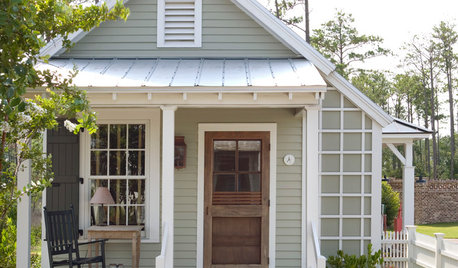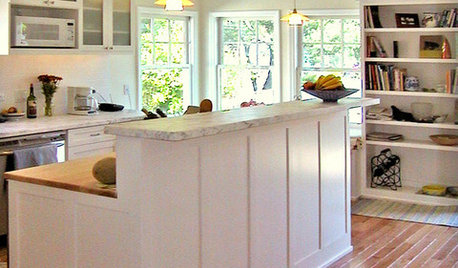Canning book that explains the chemistry?
lingon
13 years ago
Related Stories

HOUSEKEEPINGDon't Touch Another Stain Before You Read This
Even an innocent swipe with water may cause permanent damage. Here's what to know about how rugs and fabrics react
Full Story
FARMHOUSESHouzz Tour: A Farmhouse in the Dell
Modern style and a barn look mix in a most unusual Sonoma County home
Full Story
DECORATING GUIDESHouzz Tour: Traditional Meets Transitional in a Townhouse
A Southern California couple downsizes, and their designer helps them push past traditional boundaries
Full Story
DECORATING GUIDESGet the Look: 'Scandal' Style for a Sensationally Chic Home
Model a room after the compelling TV show for all the visual drama with none of the conflicts
Full Story
LIFEHow to Handle Inherited Things You Don’t Really Want
Whether you’ve inherited a large collection of items or a single bulky piece of furniture, it’s OK to let it go if you don’t need or want it
Full Story
SMALL SPACES8 Benefits of Cottage Living
Scale back to dial up your quality of life, save money and more
Full Story
KITCHEN DESIGN8 Kitchen Organizing Ideas for Messy Cooks
Not the clean-as-you-go type? Not to worry. These strategies will help keep your kitchen looking tidy no matter what your cooking style is
Full Story
LIFEThe Wisdom of Kenny Rogers, for Declutterers
No need to gamble on paring-down strategies when the country music legend has already dealt out some winning advice
Full Story
GREEN BUILDINGWorld of Design: The Joy of Moss and Its Modern Uses
This great design plant is 400 million years in the making. See how it’s inspiring art, soothing spaces and building design
Full Story
INSIDE HOUZZTell Us Your Houzz Success Story
Have you used the site to connect with professionals, browse photos and more to make your project run smoother? We want to hear your story
Full StoryMore Discussions






Linda_Lou
digdirt2
Related Professionals
Garden City Landscape Architects & Landscape Designers · Bethlehem Landscape Contractors · Athens Landscape Contractors · Belvedere Park Landscape Contractors · Bloomington Landscape Contractors · Middle River Landscape Contractors · New Braunfels Landscape Contractors · New Brighton Landscape Contractors · Oviedo Landscape Contractors · Rochester Landscape Contractors · Snoqualmie Landscape Contractors · Soddy Daisy Landscape Contractors · Waterford Landscape Contractors · Hudson Roofing & Gutters · Chicago Driveway Installation & Maintenancereadinglady
nancyofnc
mellyofthesouth
Casadehernandez
Linda_Lou